|
Listen Now
Getting your Trinity Audio player ready...
|
It’s brilliant. It’s innovative. It solves a problem, fills a gap, or creates a new desire. It keeps you up at night and dominates your daydreams. It’s the kind of idea that feels like a winning lottery ticket, and you’re filled with a desperate, burning urgency to launch it now.
An idea, no matter how groundbreaking, is just a thought. To give it life, to turn it from a dream into a business that serves customers and generates revenue, you need to build it. In today’s world, that almost always means building a digital presence a website, an app, an e-commerce platform.
So, what’s the first, most instinctive step for a modern entrepreneur?
You open a browser, head to Google, and type those 4 crucial words: “web developers near me” or near me web designer.A single Google search can kickstart your entrepreneurial journey. But what comes next can either lead to a successful launch or a costly, frustrating dead end. This blog is your guide unpacking the challenges and opportunities that follow that simple search.
This isn’t a superficial overview. This is a comprehensive, 2025-26 playbook for the Indian entrepreneur who has a great idea and is desperate to see it succeed. This guide will provide the clarity and direction you need.
Let’s demystify the process, from that initial search to the successful launch of your dream project.
The Expectation: What You Need to Know Before You Hire – ‘Near Me’

Searching for near me web designer opens a Pandora’s box of expectations. You expect a skilled professional who can read your mind and build your vision perfectly. They expect a client who knows exactly what they want and has an unlimited budget. The reality, as always, lies somewhere in between.
Let’s break down the crucial expectations and how to manage them for a successful partnership.
1. Proper Guidance: Beyond Not Just Coding Only
Your idea is your baby. You’ve nurtured it, and you’re protective of it. But a great web developers is more than just a coder; they are a technical co-pilot.
Your Expectation: A developer who listens to your idea and builds it exactly as you specified.
A Better Expectation (2025-26): A technical partner who listens, understands, and then uses their expertise to refine and improve your idea. They should be able to:
- Challenge Your Assumptions: “You want a video-heavy homepage. Have we considered the impact on loading speed for users on slower mobile networks in Tier-2 cities?”
- Suggest Better Technical Solutions: “Instead of building a custom chat feature from scratch, we can integrate a proven, scalable third-party API. It will save you ₹1,50,000 in development costs and launch two weeks faster.”
- Provide Market Insights: A good near me web designer will have a pulse on local user behavior. “In the Indian market, users are more likely to complete a purchase if UPI and popular digital wallets are the most prominent payment options.”
A developer who just says “yes” to everything is not doing you any favors. You need a partner who can provide honest, expert guidance to make your product not just functional, but successful.
2. The Execution Blueprint: From Idea to Actionable Plan
An idea in your head is abstract. To a developer, it’s a series of problems to be solved with code. The bridge between these two worlds is a detailed execution plan.
Your Expectation: You explain the idea, and they start building it.
A Better Expectation (2025-26): A structured, collaborative process to translate your vision into a technical blueprint. This involves:
- Discovery Workshops: A session (or several) where you and the development team deep-dive into the project. Who is the user? What is the core problem we are solving? What does success look like?
- Wireframing and Prototyping: Before a single line of code is written, you should see the skeleton of your website.
- Wireframes: Basic black-and-white layouts showing the structure and placement of elements.
- Prototypes: Interactive mockups that allow you to click through the user journey. This is where you catch design flaws and usability issues, not after the project is built.
- Feature Prioritization (MoSCoW Method):
- Must-Have: Core features without which the product cannot launch.
- Should-Have: Important, but not vital for the initial launch.
- Could-Have: Desirable but can be postponed.
- Won’t-Have (For Now): Features that are explicitly out of scope for the first version.
This planning phase is non-negotiable. Skipping it is like trying to build a house without a blueprint.
3. Essential Documentation: Your Project’s Bible
But I don’t have time for paperwork! is a common cry from eager entrepreneurs. However, proper documentation is the single most effective tool for preventing misunderstandings, budget overruns, and project delays.
Expectation: A handshake and a verbal agreement are enough.
A Better Expectation (2025-26): A comprehensive set of living documents that guide the entire project.
| Document Type | Purpose | Why It’s Critical for You |
|---|---|---|
| Project Brief | A 1-2 page summary of your vision, goals, target audience, and key features. | Forces you to clarify your own thinking. It’s your elevator pitch to the developers. |
| Scope of Work (SOW) | A legally binding document detailing deliverables, timelines, milestones, and costs. | Your primary protection against “scope creep” (the slow addition of new features that bloats the budget). |
| Technical Specification Sheet | Details the technology stack (e.g., WordPress, React, Shopify), hosting, APIs, etc. | Ensures the final product is built on a foundation that is scalable, secure, and manageable. |
| Content Plan | A map of your website’s pages, content, and SEO strategy (keywords, meta descriptions). | Prevents a last-minute scramble for content and ensures your site is optimized for search engines from day one. |
These documents aren’t just red tape; they are your insurance policy for a successful launch.
4. Facing the Inevitable Challenges
No project is without its hurdles. The difference between a successful project and a failed one is how you anticipate and manage these challenges.
Expectation: A completely smooth, problem-free development process.
A Better Expectation (2025-26): Awareness of potential roadblocks and a proactive plan to navigate them.
| Common Challenge | Why It Happens in 2025-26 | How Your “Near Me” Developers Helps You Fix It |
|---|---|---|
| Scope Creep | The excitement of seeing your idea come to life sparks new ideas. | Solution: A strict change-control process defined in the SOW. New ideas are documented and priced separately for a future phase. |
| Technical Glitches | The digital ecosystem is fragmented. A feature might work on Chrome for desktop but break on a specific version of Safari on an older iPhone. | Solution: A dedicated Quality Assurance (QA) phase with rigorous testing across multiple devices, browsers, and network conditions. A staging site is used for testing before anything goes live. |
| Budget Overrun | Underestimating the complexity of a feature or an unforeseen technical challenge. | Solution: A transparent pricing model and including a 15-20% contingency in your budget from the start. A good developer will flag potential budget risks early. |
| Delayed Feedback | As an entrepreneur, you’re juggling a million tasks. Providing timely feedback can be difficult. | Solution: Scheduling dedicated feedback sessions. A professional team will set clear deadlines for feedback and explain the impact of delays on the timeline. |
5. Where Projects Fail and How to Guarantee Success
Failure is a harsh word, but it’s a real risk. Understanding the common failure points is the first step to avoiding them.
High-Risk Failure Points:
- Vague Goals: Building a “cool website” is not a goal. “Achieving 100 pilot customer sign-ups in the first month” is a goal.
- Poor Communication: Long email chains, missed calls, and verbal instructions lead to chaos.
- Ignoring the User: Building a product based on your own assumptions without validating it with actual target users.
- No Post-Launch Plan: Launching the website is the start line, not the finish line. Without a plan for marketing, maintenance, and updates, even the best website will wither.
Your Guided Path to Success:
- Define SMART Goals: Specific, Measurable, Achievable, Relevant, Time-bound.
- Establish a Communication Hub: Use a project management tool like Asana, Trello, or even a shared Google Doc to track all communication, tasks, and files.
- Build a Minimum Viable Product (MVP): Launch the simplest version of your product that solves the core problem for your target user. Gather feedback, learn, and then iterate.
- Plan for “Day Two”: Before you launch, have a clear plan for your first 90 days. This should include a marketing strategy, a budget for maintenance and security, and a roadmap for future features.
For over a decade, companies like MaMITs have guided businesses through this exact journey. With over 180+ projects for trusted brands since 2015, their process is built on a foundation of preventing these common failures.
6. How a Great Partner Contributes to Your Idea
A transactional developer takes your order. A true partner invests in your success. They bring their experience to the table to actively improve your original idea.
Examples of Value-Added Contributions:
- Performance Optimization: “Your idea for a real-time analytics dashboard is great. Let’s build it using serverless functions and a lightweight front-end framework. This will ensure it’s lightning-fast and costs less to run as you scale.”
- User Experience (UX) Enhancements: “Based on our experience with other e-commerce sites in India, adding a ‘Wishlist’ feature early on can increase user retention by 30%. Let’s move that up from a ‘Could-Have’ to a ‘Should-Have’.”
- Future-Proofing: “The current trend is AI-powered personalization. Let’s design the database schema now in a way that allows us to easily integrate a recommendation engine in Phase 2 without rebuilding everything.”
This collaborative improvement is one of the biggest advantages of working with an experienced team.
7. The Success Line Way: A Phased Approach to Victory
Don’t try to build your entire empire in one go. A phased approach minimizes risk, allows for learning, and builds momentum.
The Modern Launch Roadmap (2025-26):
- Phase 1: Validation & MVP (1-2 Months):
- Goal: Prove that people want what you’re building.
- Outcome: A simple, functional product (the MVP) launched to a small group of early adopters.
- Phase 2: Iterate & Grow (3-6 Months):
- Goal: Refine the product based on user feedback and start scaling your user base.
- Outcome: Version 2.0 with key new features and a growing, engaged community.
- Phase 3: Scale & Optimize (Ongoing):
- Goal: Expand into new markets, optimize for profitability, and become a leader in your niche.
- Outcome: A mature, robust platform with a dedicated team focused on continuous improvement.
This iterative process is the standard for successful tech startups globally.
8. Guidance on Product Sources and Services
Your website doesn’t exist in a vacuum. It’s part of a larger ecosystem of tools and services. A good developer near you will help you navigate this complex landscape.
| Category | Key Considerations for the Indian Market (2025-26) | Examples |
|---|---|---|
| Payment Gateways | Support for UPI is non-negotiable. Low transaction fees and reliable settlement cycles are crucial. | Razorpay, Paytm, Stripe (for international payments) |
| Hosting & CDN | Servers located in India (or Singapore) for low latency. A Content Delivery Network (CDN) is essential for fast loading speeds across the country. | AWS (Mumbai Region), Google Cloud, DigitalOcean, Cloudflare (CDN) |
| Email & SMS Marketing | Services that offer reliable delivery and comply with TRAI regulations for transactional and promotional messages. | Sendinblue (Brevo), Mailchimp, Twilio |
| Analytics | Tools that go beyond basic page views to track user behavior, conversion funnels, and customer lifetime value. | Google Analytics 4, Hotjar |
Your developer should not just integrate these services; they should advise you on which ones are the best fit for your specific business model and budget.
9. Brand Creation: More Than Just a Logo
In the crowded digital marketplace of 2025-26, a strong brand is a critical differentiator. Your website is the cornerstone of that brand.
Your Need: The developer will make the website “look nice.”
A Better Expectation (2025-26): The professional website designer near me you hire is a brand custodian. They should help you with:
- Brand Cohesion: Ensuring your logo, color palette, typography, and tone of voice are consistent across the entire website and all other digital touchpoints.
- Style Guide Creation: A document that defines your brand’s visual rules. This is invaluable for maintaining consistency as your team grows.
- Technical Brand Implementation: This includes:
- Favicon: The small icon in the browser tab.
- Social Media Meta Tags (Open Graph): Ensuring that when your website is shared on social media, it displays with a clean, branded preview.
- Custom Error Pages: A branded 404 (Not Found) page is a much better user experience than a generic server error.
10. Pilot Project Process: A Step-by-Step Guide
Let’s put it all together. What does the process of designing and launching your pilot project (your MVP) actually look like with a professional team?
- Discovery & Strategy Workshop (1-2 Days): You, your key stakeholders, and the development team in a room (virtual or physical), hashing out the project goals, user personas, and core features.
- Wireframing & Prototyping (1 Week): The design team creates the blueprint. You review and provide feedback until the user flow is perfect.
- UI/UX Design (1-2 Weeks): The wireframes are brought to life with your brand’s colors, fonts, and imagery. This is the final look and feel of your site.
- Core Development Sprint (3-5 Weeks): The developers get to work, building the front-end (what users see) and the back-end (the engine that powers the site).
- Content Integration & QA (1 Week): Your content is added to the site, and the testing team rigorously tries to break it, reporting bugs for the developers to fix.
- User Acceptance Testing (UAT) (1 Week): You and a small group of trusted users test the site to ensure it meets your expectations.
- Go-Live & Launch (1 Day): The final checks are done, the metaphorical switch is flipped, and your website is live to the world!
- Post-Launch Support & Iteration (Ongoing): The journey continues with ongoing maintenance, monitoring, and planning for the next phase of development.
This structured process, refined over 9+ years of experience by firms like MaMITs, transforms the chaotic energy of a “desperate to launch” idea into a controlled, predictable, and successful outcome. Their expertise spans from Idea -> Planning -> Discussion -> Design -> Development -> Testing -> Approve -> Launch -> Support & Maintenance, ensuring a holistic and personalized service.
Plan for around 1.5 to 2 months to take your startup idea from concept to launch-ready website. 50 days, 1 hour and 1 minute
How to Launch Your Dream Project into Reality
You’ve navigated the expectations. Now, let’s get tactical. Launching your dream project is a marathon, not a sprint. Here’s a more detailed look at the critical phases.
- Phase : Pre-Production – Laying the Foundation (Weeks 1-4)
This phase is all about planning. Rushing this is the #1 mistake new entrepreneurs make.
Market & Competitor Research:
Who are your top 3 competitors? What do they do well? Where are their weaknesses?
Use tools like Google Trends to validate interest in your idea in the Indian market. Search for keywords related to your business. Is the trend going up or down?
Create a simple SWOT analysis (Strengths, Weaknesses, Opportunities, Threats) for your idea.
Finalize Your MVP Scope:
Be ruthless. Your MVP should solve only the most critical problem for your most important user.
Example: If you’re building a food delivery app, the MVP is the ability to view restaurants, place an order, and pay. Features like loyalty points, advanced filtering, and driver tracking are for V2.
Secure Your Domain & Basic Branding:
Choose a short, memorable, and easy-to-spell domain name. A.inor.co.inis great for an India-focused business.
Create a simple, professional logo. You can use online tools for an initial version, but plan to hire a professional designer later.
Select Your Technical Partner:
This is where your search for web developers near me culminates.
Prepare your Project Brief and RFP.
Interview at least 3-5 agencies or freelancers. (More on how to select them later). - Phase : Production – The Building Blocks (Weeks 06-10)
This is where your partner takes the lead, but your involvement is still crucial.
The Design Phase:
UX (User Experience): This is about the feel of the site. Is it logical? Is it easy to use? Your feedback on the interactive prototypes is vital here. Put yourself in your customer’s shoes.
UI (User Interface): This is about the look of the site. The colors, the fonts, the icons. Ensure it aligns with your brand and appeals to your target audience.
The Development Phase:
Front-End: The part of the website you see and interact with.
Back-End: The server, database, and application logic that powers the front-end.
Agile Methodology: Most modern teams work in “sprints” (usually 1-2 weeks). At the end of each sprint, they should show you a demonstrable piece of working software. This keeps the project on track and allows for course corrections.
Your Role: Be available. Your developer will have questions. The faster you respond, the smoother the process. Stick to the scheduled feedback sessions and provide clear, consolidated feedback. - Phase : Post-Production & Launch (Weeks 07-08)
The finish line is in sight, but this phase is critical for a smooth launch.
Final Testing:
Cross-Browser/Device Testing: Check the site on Chrome, Firefox, Safari, and Edge. Test it on different Android phones, iPhones, tablets, and laptops.
Performance Testing: Use tools like Google PageSpeed Insights. How fast does your site load on a 4G connection? It needs to be under 3 seconds.
Security Testing: Basic checks for vulnerabilities.
The Go-Live Checklist:
Final DNS configuration.
SSL certificate installation (HTTPS is mandatory).
Setting up Google Analytics and other tracking tools.
Final check of all forms and payment gateways.
Launch Day: Don’t do a massive public announcement on day one. Do a “soft launch.” Tell a few friends and family. Test the live environment. Once you’re confident everything is stable, then you can start your marketing push.
Website Design for an Ecommerce Project Your “Near Me” Guide


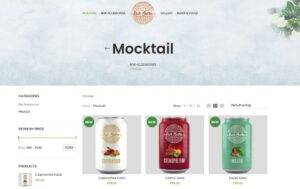

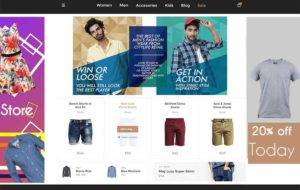




Ecommerce is a different beast. It’s not just a website; it’s a digital store. When you search for “ecommerce developers near me,” you’re looking for a very specific skill set.
Key Differences for E-commerce:
- Complexity: E-commerce sites involve product catalogs, inventory management, shopping carts, complex payment and shipping integrations, and user accounts.
- Security: You are handling sensitive customer data and financial transactions. Security is paramount.
- Scalability: A successful e-commerce site will see traffic spikes during sales and festivals. The architecture must be able to handle this.
E-commerce Pilot Project Process:
- Choosing the Right Platform: This is your most important decision.
- Shopify: Excellent for beginners. It’s a fully hosted solution, so you don’t have to worry about servers. It’s fast, secure, and has a great app store. Ideal for straightforward product sales.
- WooCommerce (on WordPress): Highly customizable and flexible. You have full control over the code and hosting. It’s great if you have unique requirements or want to integrate your store tightly with a content-heavy blog. This is where a “WordPress website developer near me” becomes invaluable.
- Custom Solution (e.g., using React/Node.js): For highly unique business models or large-scale enterprises that need complete control. This is the most expensive and time-consuming option.
- Must-Have Features for an Indian E-commerce MVP (2025-26):
- Crystal-Clear Product Pages: High-quality images from multiple angles, zoom functionality, detailed descriptions, and transparent pricing (including all taxes).
- Guest Checkout: Don’t force users to create an account to make a purchase. This is a major cause of cart abandonment.
- Multiple Payment Options: UPI is king. Also include credit/debit cards, net banking, and popular wallets. “Cash on Delivery” (COD) is still expected by a large segment of the market, but be aware of the higher risk of returns.
- Mobile-First Design: Assume most of your customers will shop on their phones. The entire experience, from browsing to checkout, must be flawless on a small screen.
- Clear Shipping & Return Policies: Be upfront about shipping costs and delivery timelines. Have a clear, easy-to-understand return policy.
- Working with Your “Ecommerce Developers Near Me”:
- Local Payment Gateway Expertise: A local developer will have hands-on experience integrating Razorpay, PayU, etc., and will know the nuances of their APIs and settlement processes.
- Understanding Local Logistics: They can recommend and integrate with local shipping providers like Shiprocket, Delhivery, or Blue Dart.
- Compliance and Taxation: They will be aware of Indian GST regulations and how to correctly implement them in your store.
Services Based Business? Hiring a “Professional Website Designer Near Me”
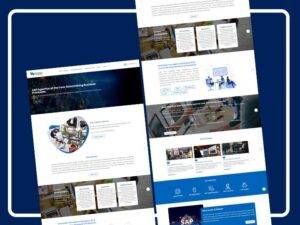
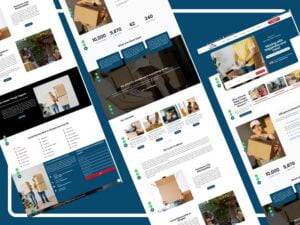
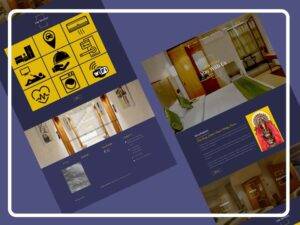


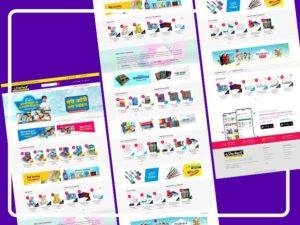
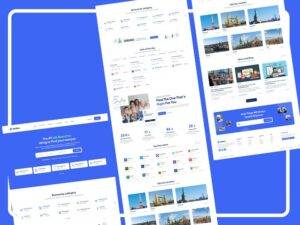
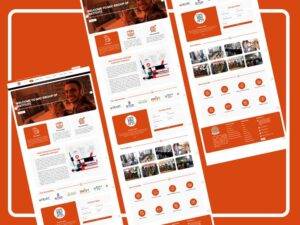
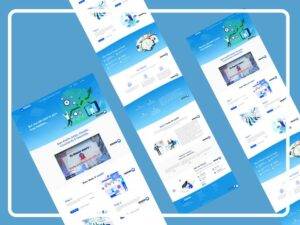
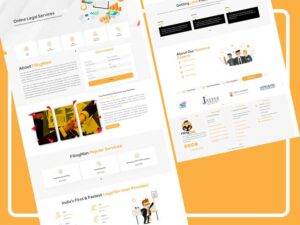
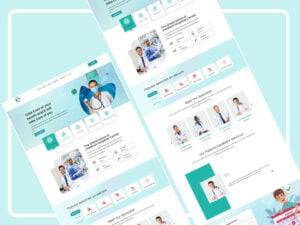
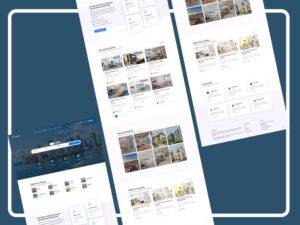
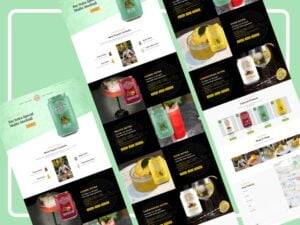
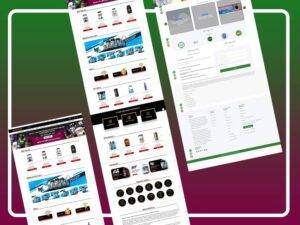
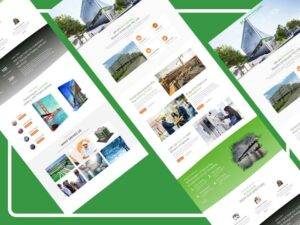
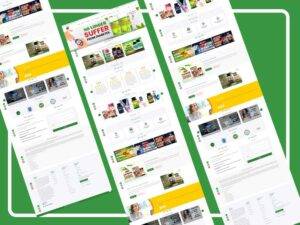
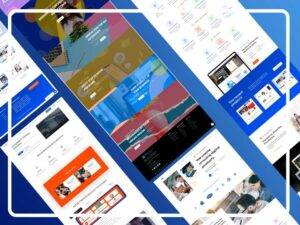

If your business sells services (e.g., consulting, coaching, photography, legal advice), your website’s job is different. It’s not a store; it’s a lead-generation engine.
Key Differences for Service Based Websites:
- Goal: The primary goal is to build trust, establish authority, and persuade visitors to make contact.
- Focus: The focus is on clear communication of your value proposition, showcasing your expertise, and making it incredibly easy for potential clients to get in touch.
- Content: Content is king. Your website needs compelling copy, case studies, testimonials, and a professional blog to demonstrate your knowledge.
Services Pilot Project Process:
- Defining Your Conversion Goal: What is the single most important action you want a visitor to take?
- Fill out a contact form?
- Schedule a consultation call?
- Download a free guide? This “conversion goal” will dictate the entire design and layout of your site.
- Must-Have Pages for a Service-Based Website:
- Homepage: A clear, concise headline that explains what you do, for whom, and what makes you different.
- Services Page: A detailed breakdown of your service offerings, explaining the process and the benefits for the client.
- About Us Page: Tell your story. People hire people. This is your chance to build a personal connection.
- Case Studies/Portfolio Page: Proof of your work. Show, don’t just tell. Detail the problem, your solution, and the results you achieved for past clients.
- Blog: The single best tool for showcasing your expertise and attracting clients through SEO.
- Contact Page: Make it easy. Include a simple form, your phone number, email address, and if relevant, a map to your office (powered by Google Maps).
- Working with Your “Professional Website Designer Near Me”:
- Focus on Lead Capture: They should design “Call-to-Action” (CTA) buttons that are prominent and persuasive. Contact forms should be simple and ask for minimal information initially.
- SEO Strategy: For a service business, local SEO is crucial. Your designer should implement schema markup for local businesses and optimize your content for “near me” searches (e.g., “best corporate lawyer in Bhopal”).
- Building Trust Signals: They will know how to strategically place testimonials, client logos, and industry certifications to build credibility with visitors.
Also Before You Hire – Checklist
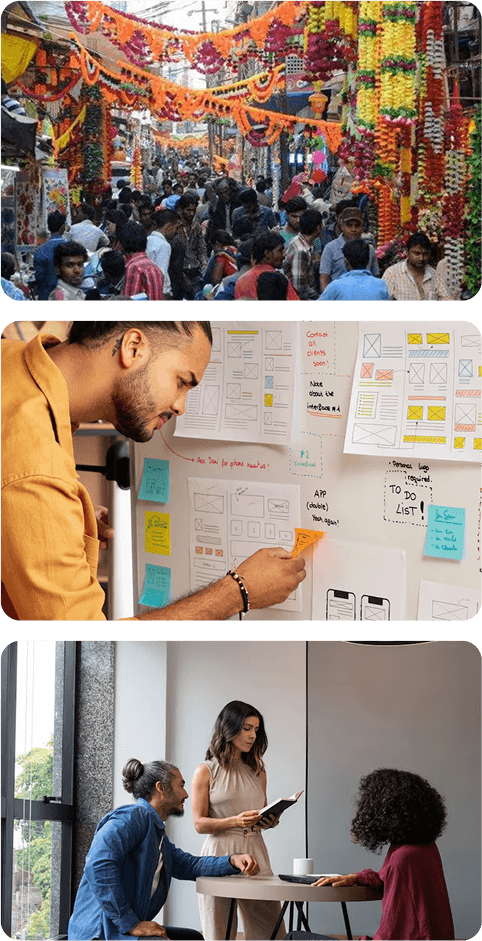
You’ve found a few promising candidates from your web designers near me search. How do you make the final choice? This is a business partnership. Treat it with that level of diligence.
1. Clear Terms: The Contract
Never, ever start a project without a signed contract. A professional will insist on one.
- What to Look For:
- Detailed Scope of Work (SOW): Exactly what they will deliver.
- Payment Schedule: Tied to milestones (e.g., 30% upfront, 40% on design approval, 30% on launch).
- Timeline: A realistic schedule with key deadlines for both you and them.
- Ownership Clause: It must state that you own 100% of the final code and design upon final payment.
- Termination Clause: How can either party exit the agreement if things go wrong?
2. Expertise: The Proof is in the Pudding
Don’t be swayed by a fancy sales pitch. Dig for proof of their expertise.
- What to Look For:
- Industry Specialization: Have they built websites for businesses like yours before? An e-commerce specialist is different from a B2B service site designer.
- Technical Knowledge: Ask them why they chose a particular technology for a past project. A good developer can explain complex topics in simple terms.
- Certifications: While not everything, certifications (e.g., Google Analytics, AWS, Shopify Experts) show a commitment to their craft.
3. Experience Matters (Especially for Startups)
An experienced developer has seen it all. They’ve navigated the challenges you’re about to face and can guide you around them.
- What to Look For:
- Years in Business: Look for a team or freelancer with at least 3-5 years of professional experience.
- Number of Projects: A solid portfolio of 20+ live projects is a good sign.
- Startup Experience: Have they worked with first-time entrepreneurs before? They will be more patient and better equipped to guide you through the process.
4. Check Portfolios: Go Beyond the Screenshots
A portfolio is their resume. Interrogate it.
- How to Analyze a Portfolio:
- Visit the Live Sites: Don’t just look at pictures. Click through the actual websites.
- Test on Mobile: Open the sites on your phone. Is the experience seamless?
- Check the Speed: Use Google PageSpeed Insights to test a few of their projects.
- Look for Variety: Do all their sites look the same, or can they adapt their style to different brands?
- Ask for Case Studies: For 1-2 projects that are similar to yours, ask for a detailed case study explaining the project goals, the process, and the results.
5. How Long Will It Take? The Timeline Question
“How long will it take?” is your question. “It depends,” will be their answer. A good developer will break it down for you.
- What to Expect:
- A simple service website (MVP): 4-6 weeks.
- A basic e-commerce website (MVP): 6-10 weeks.
- A custom web application (MVP): 12-20+ weeks.
- Red Flags:
- A developer who gives you a fixed timeline without a detailed discovery session.
- Unrealistically fast promises (“We can build your e-commerce site in one week!”).
6. The Support System: What Happens After Launch?
Your website is a living entity. It needs care and feeding.
- What to Look For:
- Maintenance Packages: What do they offer for ongoing security updates, backups, and performance monitoring?
- Service Level Agreement (SLA): How quickly will they respond to issues? (e.g., “2-hour response time for critical issues”).
- Training: Will they train you on how to use the backend of your website (e.g., how to add a new product or blog post)?
7. The 1-Year Contract: A Commitment to Partnership
For a new business, the first year is critical. Having a technical partner locked in for that period provides immense peace of mind.
- Why It’s a Good Idea:
- It ensures you have dedicated support during your most vulnerable phase.
- It encourages the developer to build a high-quality, maintainable product because they know they’ll be the ones supporting it.
- Look for a monthly retainer model that covers a set number of hours for support, maintenance, and small feature enhancements.
Why Only “Near Me Web Designer”?

In an age of global connectivity, why does proximity still matter so much in 2025-26? Why is that “near me” search so powerful?
- Instant Collaboration & High-Bandwidth Communication:
- The Power of the Whiteboard: Nothing beats sitting in the same room, sketching out ideas on a whiteboard. The speed of iteration is unmatched.
- Reading Between the Lines: Face-to-face meetings allow you to read body language and tone of voice. This helps build trust and avoid misunderstandings that are common over email or chat.
- Deep Local Market Insight:
- A WordPress website developers near me in Bhopal understands the local business landscape. They know which payment methods are most trusted by local consumers, what kind of imagery and language resonates with the community, and the specific challenges of local logistics providers. This hyper-local insight is a competitive advantage.
- Accountability and Trust:
- It’s simply easier to hold someone accountable when you can meet them in person. It builds a stronger, more personal relationship than a purely virtual one.
- Agile and Responsive Ongoing Support:
- When your website goes down or you need an urgent change, having a team in the same city means faster response times. You’re not just a ticket number in a global helpdesk; you’re a local client they value.
- Supporting the Local Economy:
- By hiring a website creation service near me, you are investing in your local community and building a professional network that can pay dividends for years to come.
While you can certainly build a successful website with a remote team, the combination of seamless collaboration, local expertise, and tangible accountability makes finding a great local partner a strategic advantage, especially for a first-time entrepreneur. A trusted partner like MaMITs, with a 98% satisfaction rate or your money back guarantee, exemplifies the confidence and quality you can find by focusing your search locally. Rated 4.9/5 based on 168 customer reviews, their track record speaks to the power of this approach.
website developers near me
FAQs : Website developer near me
This varies wildly, but here’s a rough guide for a pilot project (MVP) with a professional agency or freelancer:
Simple Service/Informational Website: ₹15,000 – ₹60,000
E-commerce Website (WooCommerce/Shopify): ₹30,000 – ₹2,50,000+
Custom Web Application: Starts at ₹3,00,000 and can go up significantly based on complexity. Be very wary of anyone offering to build a site for ₹5,000 – ₹10,000. You will likely get a poorly coded, insecure, and non-functional template site.
Freelancer: Good for smaller projects with a well-defined scope. Often more affordable. The risk is that you’re dependent on one person.
Agency: Better for more complex projects that require a team (designer, developer, project manager, tester). More expensive but offers more reliability, resources, and a structured process. For a critical business launch, an agency is often the safer bet.
A web designer focuses on the visual and user experience aspects (the look and feel).
A web developer takes that design and writes the code to make it a functional website.
Many professionals and agencies offer both services. A “professional website designer near me” often implies a team that can handle the entire process.
Yes. For 99% of businesses, the answer is an emphatic yes. A blog is the single most powerful tool for:
SEO: It allows you to rank for keywords your customers are searching for.
Building Authority: It proves you are an expert in your field.
Connecting with Your Audience: It gives your brand a voice and personality.
While possible, it’s risky for a business owner. Basic maintenance involves weekly software updates (like for WordPress plugins), daily backups, security scans, and performance monitoring. Missing a critical security update can leave your site vulnerable to hackers. For the first year, it is highly recommended to have your developer manage this on a retainer. The peace of mind is worth the cost.
Conclusion: From Search “Website Designers Near Me” to Startup Success : Your Mantra for India
That simple Google search web developers near me is the first step on one of the most exciting journeys you will ever take. It’s a step filled with hope, ambition, and more than a little anxiety.
The path from a brilliant idea to a thriving online business is complex, but it is not a mystery. It’s a structured process that requires careful planning, a commitment to quality, and most importantly, the right partner.
In 2025-26, that partner is more than just a coder. They are a local guide, a technical strategist, a brand custodian, and a business consultant rolled into one. They guide you, and build with you. They turn your abstract vision into a tangible, high-performing digital asset that can win in a competitive marketplace.
Don’t rush the process. Embrace the planning. Ask the tough questions. Do your due diligence. By investing the time and effort to find a truly professional website designers near me, you are not just buying a service; you are laying the foundational cornerstone for your entire business. Your dream deserves nothing less. | All The Best For Dream Project!
This article also covers what you should consider before hiring anyone.
| Monday | 10:00 AM - 8:00 PM |
| Tuesday | 10:00 AM - 8:00 PM |
| Wednesday | 10:00 AM - 8:00 PM |
| Thursday | 10:00 AM - 8:00 PM |
| Friday | 10:00 AM - 8:00 PM |
| Saturday | 10:00 AM - 8:00 PM |
| Sunday | Open 24 hours |




